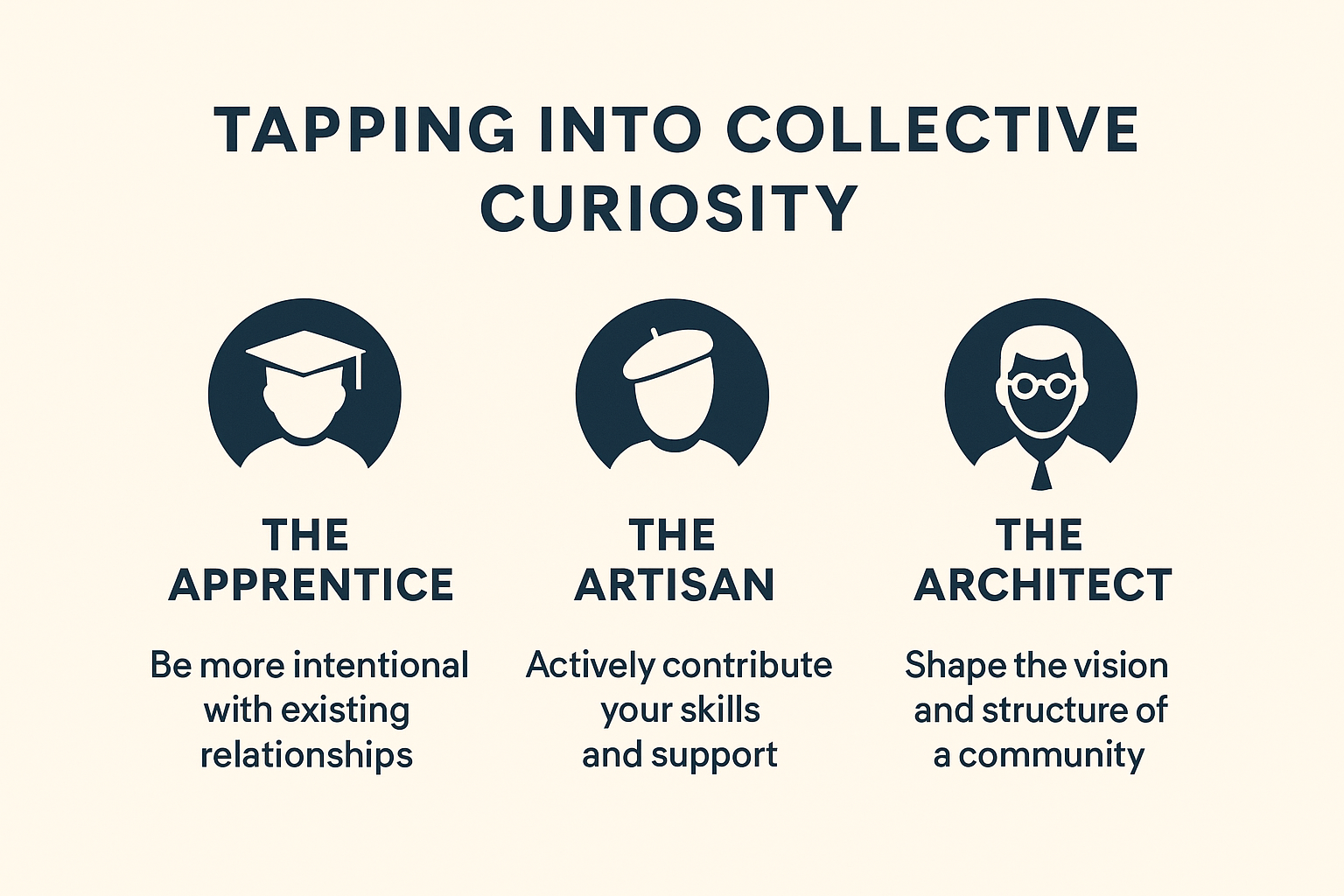Tiny Experiments, IMPACT: Unlocking Social Flow, The Power of Collective Curiosity - Part 8
Chapter 10 marks the beginning of the final section of the book: IMPACT. It delivers something loud and resonant:
Individual experiments are powerful, but collective curiosity can be transformative.
It opens with a simple yet profound truth: while solo exploration brings flow, shared exploration multiplies it.
Social Flow > Solo Flow
We’ve all felt the thrill of being in flow alone in a deep focus, creativity, and momentum. But there’s something different, something magical, about being in flow with others.
That’s what Anne-Laure Le Cunff calls social flow, when you co-think, co-create, and co-discover with others. It’s more than productivity but it’s pleasure, play, and serendipity.
Whether you’re working with people who share your background or come from wildly different worlds, collective curiosity sparks better ideas, deeper experiences, and more sustainable energy. Building relationships won’t disrupt your work but in many cases, it will inspire your best work.
The Three Effects of Community
Chapter 10 beautifully lays out how community makes our lives richer in three interconnected ways:
-
The Pooling Effect
When we join a community, we gain access to a collective set of knowledge, skills, and resources far beyond our own. This is called transactive memory, a concept in psychology where knowledge is distributed across people in a network. Just like a marathoner works with a coach, a nutritionist, and a sponsor, we don’t need to know everything, we just need to know who to ask. This is why we turn to platforms like Reddit, Quora, or Stack Overflow. We rely on community as an extension of our own brain.
-
The Ripple Effect
When we participate in communities with genuine curiosity, unexpected doors open. What starts as a comment, a question, or a shared interest might lead to:
-
Collaborators
-
Clients
-
Mentors
-
Lifelong friends
These are communities of practice, spaces where people learn from each other because they care about the same things. They expand our path in ways we could never predict.
-
-
The Safety Effect
Curiosity struggles to survive in instability. If you’re overwhelmed, anxious, or isolated, it’s hard to stay open. That’s why community is a source of safety. It offers:
-
Emotional support
-
Encouragement
-
A sense of belonging
Different communities serve different roles. A weekend soccer group gives shared challenge. A local nonprofit offers purpose. A friend group gives laughter. The key is to recognize that community isn’t one-size-fits-all-and that’s a good thing.
-
Tapping Into Collective Curiosity
Of course, joining or creating a community can feel overwhelming. Not everyone wants to jump in and lead, and you don’t have to. Le Cunff lays out three stages of involvement-each one valid and valuable:
-
The Apprentice
-
Be more intentional with existing relationships.
-
Deepen a few key connections
-
Have more honest conversations
-
Be fully yourself
-
-
The Artisan
-
Actively contribute your skills and support.
-
Mentor others
-
Collaborate on shared interests
-
Offer your expertise where needed
-
-
The Architect
-
Shape the structure and vision of a community.
-
Host meetups
-
Start a learning circle
-
Lead with vulnerability, not perfection
-
Building a community doesn’t mean having all the answers. It means creating a space where everyone’s curiosity can thrive.

Build a Campfire, Not a Megaphone
The metaphor Le Cunff uses is beautiful:
Building collective curiosity is like building a campfire.
You don’t need to fuel it alone. You just need to spark it and let others bring warmth and light. To do that, we need to:
-
Be vulnerable: admit you haven’t figured it all out
-
Create psychological safety: no judgment, no pressure
-
Make it cozy, not polished: people want belonging, not performance
-
Let go of control: too much structure kills creativity
-
Embrace intellectual play: the best conversations aren’t about agreeing but enjoying disagreement
As Adam Grant says:
“The clearest sign of intellectual chemistry is not agreement-but the joy of respectful disagreement.”
Final Thought: Start Small, Stay Curious
Collective curiosity doesn’t need to be a project. It can start with:
-
A thoughtful question in a group chat
-
Reaching out to someone you admire
-
Volunteering your skill in a cause you care about
-
Being more present in a community you already belong to
Move at your own pace, listen to your needs, and make commitments that support, not strain, your life. Social flow expands your horizons, amplifies your impact, and softens the bumps on the road. It doesn’t have to be loud or large, it just has to be shared.
Next, we’ll explore the different part of IMPACT: learning in public and creating ripple effects for others. Until then, stay curious! And maybe reach out to someone who sparks your thinking, you might just be building a campfire together.